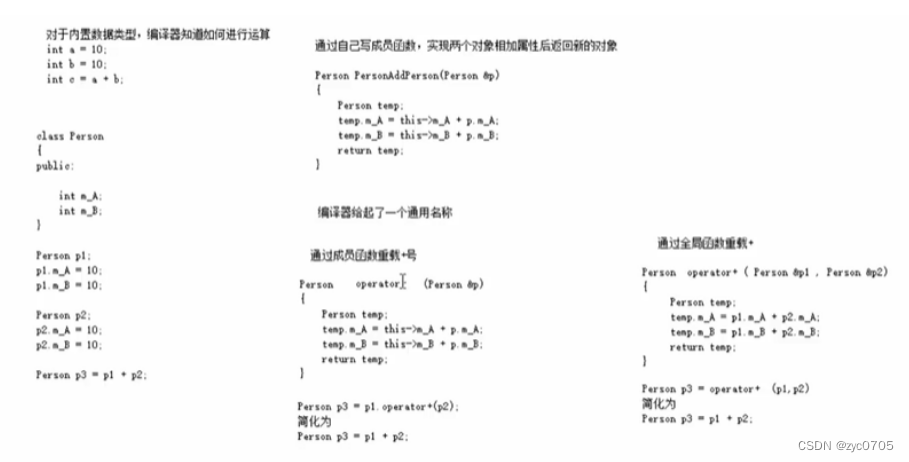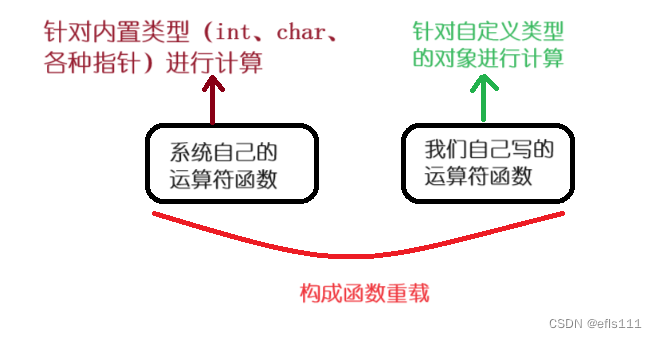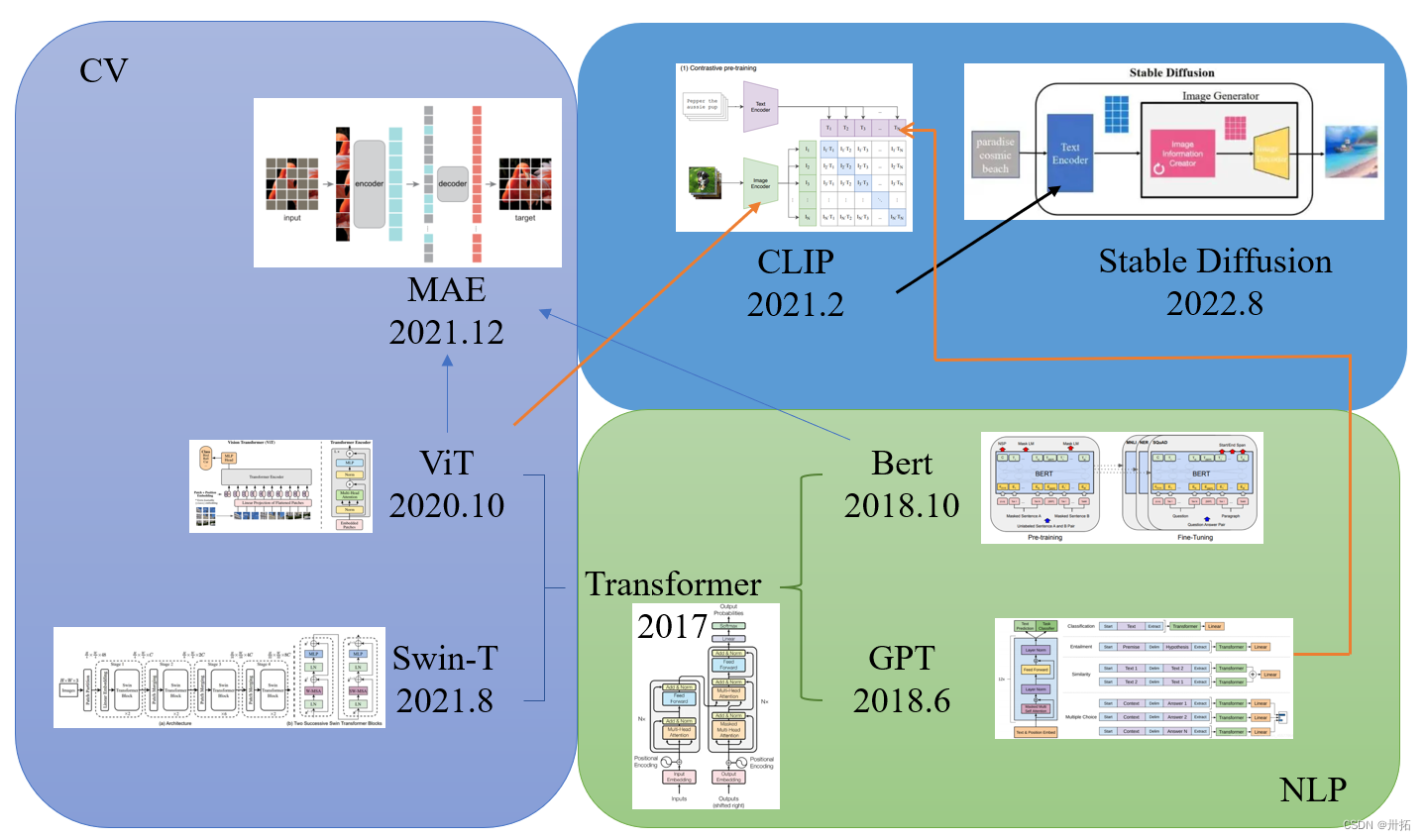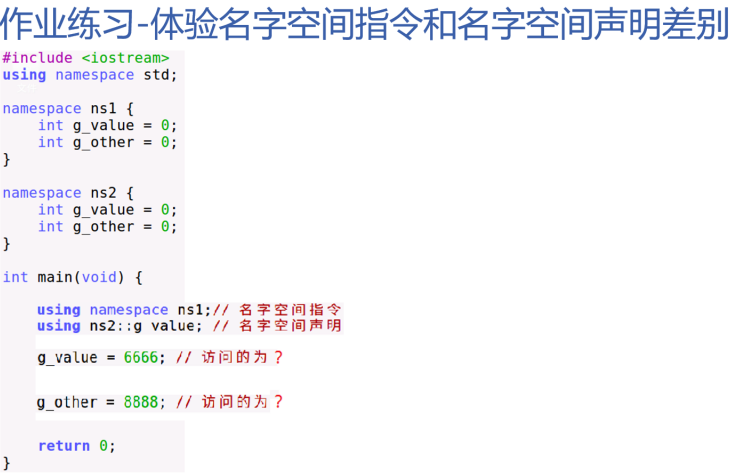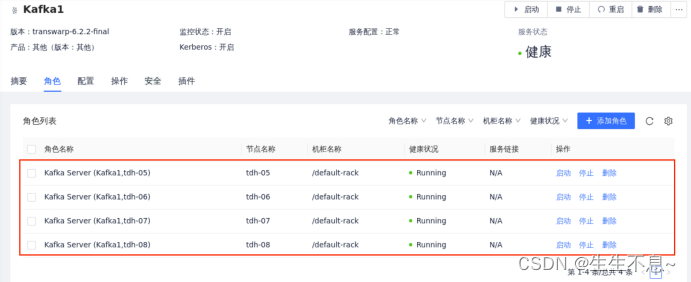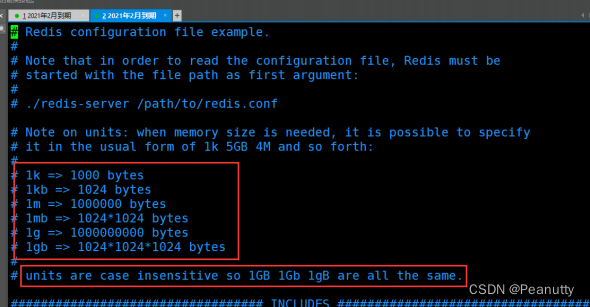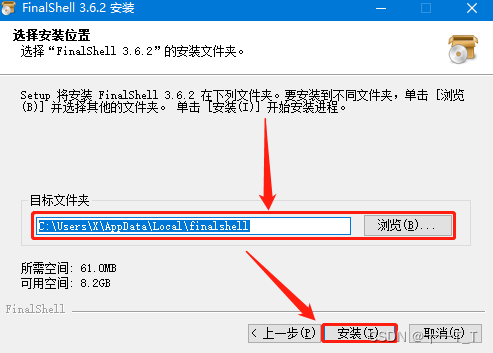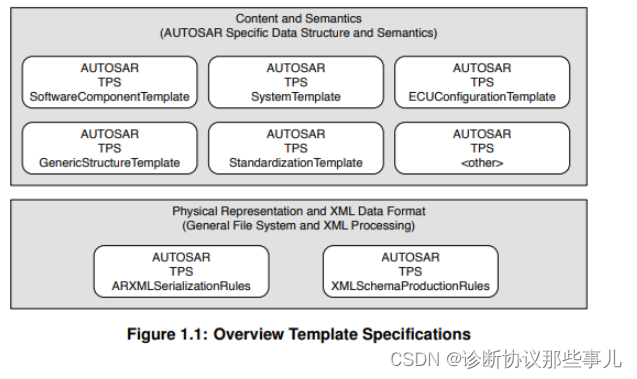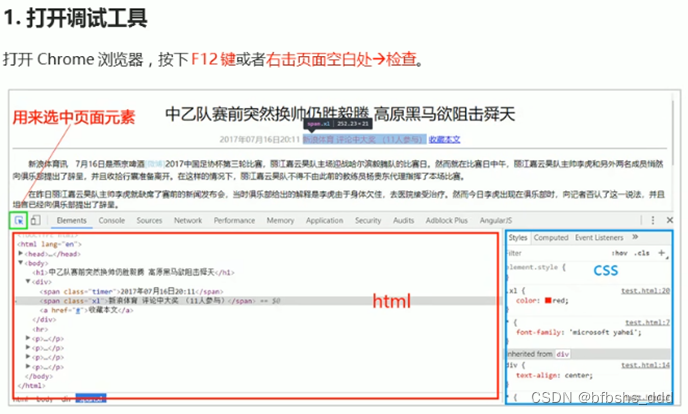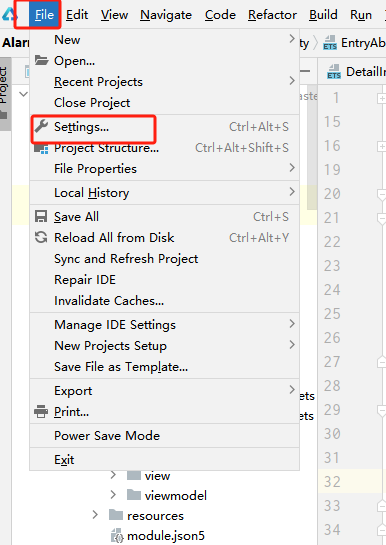目录

前言
在C++中,运算符重载是一种强大的特性,允许您重新定义已定义的运算符,以便它们适用于用户自定义类型。通过运算符重载,您可以编写自定义类型的运算符行为,使得用户自定义类型的对象可以像内置类型一样进行运算。
算术运算符重载
+:执行加法操作,通常用于数字或字符串的拼接。-:执行减法操作,通常用于数字之间的减法运算。*:执行乘法操作,通常用于数字之间的乘法运算。/:执行除法操作,通常用于数字之间的除法运算。
通过重载这些算术运算符,您可以定义自定义类型对象之间的加减乘除操作。这使得用户自定义类型的对象可以像内置类型一样进行算术运算。
加号运算符
#include <iostream>
using namespace std;
class Person {
public:
Person() {
};
Person(int a, int b)
{
this->m_A = a;
this->m_B = b;
}
// 成员函数实现 + 号运算符重载
Person operator+(const Person& p) {
Person temp;
temp.m_A = this->m_A + p.m_A;
temp.m_B = this->m_B + p.m_B;
return temp;
}
public:
int m_A;
int m_B;
};
// 全局函数实现 + 号运算符重载
//Person operator+(const Person& p1, const Person& p2) {
// Person temp(0, 0);
// temp.m_A = p1.m_A + p2.m_A;
// temp.m_B = p1.m_B + p2.m_B;
// return temp;
//}
// 运算符重载 可以发生函数重载,就是可以根据参数的不同去分别调用不同的operator运算符重载函数
Person operator+(const Person& p2, int val)
{
Person temp;
temp.m_A = p2.m_A + val;
temp.m_B = p2.m_B + val;
return temp;
}
void test() {
Person p1(10, 10);
Person p2(20, 20);
// 成员函数方式
Person p3 = p2 + p1; // 相当于 p2.operaor+(p1)
cout << "mA:" << p3.m_A << " mB:" << p3.m_B << endl; // 30 30
Person p4 = p3 + 10; // 相当于 operator+(p3,10)
cout << "mA:" << p4.m_A << " mB:" << p4.m_B << endl; // 40 40
}
int main() {
test();
return 0;
}位运算符重载
&:按位与运算符,对两个操作数逐位进行与运算。|:按位或运算符,对两个操作数逐位进行或运算。^:按位异或运算符,对两个操作数逐位进行异或运算。~:按位取反运算符,对操作数逐位取反。<<:左移运算符,将操作数的二进制位向左移动指定的位数。>>:右移运算符,将操作数的二进制位向右移动指定的位数。
通过重载位运算符,您可以定义自定义类型对象之间的按位操作。这使得自定义类型的对象可以进行位级运算。
左移运算符
#include <iostream>
using namespace std;
#include <string>
/* 作用:可以输出自定义数据类型 */
class Person {
friend ostream& operator<<(ostream& out, Person& p); // 全局函数做Person类的友元,可以访问类的私有成员
public:
Person(int a, int b)
{
this->m_A = a;
this->m_B = b;
}
//成员函数 实现不了 p << cout 不是我们想要的效果
//void operator<<(Person& p){
//}
private:
int m_A;
int m_B;
};
//全局函数实现左移重载
//ostream对象只能有一个,故使用 &引用接收,不会创建新对象
ostream& operator<<(ostream& out, Person& p) {
out << "a:" << p.m_A << " b:" << p.m_B;
return out; // 需返回cout引用,达到链式调用的效果
}
void test() {
Person p1(10, 20);
cout << p1 << "hello world" << endl; // a:10 b:20hello world 链式编程
}
int main() {
test(); // 重载左移运算符配合友元可以实现输出自定义数据类型
return 0;
}自增自减运算符重载
通过重载自增和自减运算符,您可以定义自定义类型对象的自增和自减操作。这允许您使用
++和--来递增或递减对象的值。
前置++自增运算符
前置++,必须返回引用,不能返回值,因为要对同一原对象操作
解释一下 test01函数中的 cout << ++myInt << endl。首先,递增运算符的重载函数++myInt会被执行,将myInt的值加1,并返回递增后的对象引用。然后,左移运算符的重载函数operator<<会接受递增后的对象作为参数,并将其输出到标准输出流cout中。
#include <iostream>
using namespace std;
#include <string>
class MyInteger {
friend ostream& operator<<(ostream& out, MyInteger myint);
public:
MyInteger() {
m_Num = 0;
}
//前置++,必须返回引用,不能返回值,因为要对同一原对象操作
MyInteger& operator++() { //先++
this->m_Num++;
//再返回
return *this;
}
private:
int m_Num;
};
/* 左移重载 */
ostream& operator<<(ostream& out, MyInteger myint) {
out << myint.m_Num;
return out;
}
// 前置++ 先++ 再返回
void test01() {
class MyInteger myInt;
cout << ++myInt << endl; // 1 递增重载、左移重载
cout << myInt << endl; // 1 左移重载
}
int main() {
test01();
return 0;
}后置++自增运算符
后置++, 只能返回值,因为创建的是临时对象,函数销毁,引用就不对了
#include <iostream>
using namespace std;
#include <string>
/*
前置递增返回引用,后置递增返回值
*/
class MyInteger {
friend ostream& operator<<(ostream& out, MyInteger myint);
public:
MyInteger() {
m_Num = 0;
}
//后置++, 只能返回值,因为创建的是临时对象,函数销毁,引用就不对了
MyInteger operator++(int) { // int 代表后置++
//先返回
MyInteger temp = *this; // 记录当前本身的值,然后让本身的值加1,但是返回的是以前的值,达到先返回后++;
this->m_Num++;
return temp; // 此时返回的还是++前的 0
}
private:
int m_Num;
};
/* 左移重载 */
ostream& operator<<(ostream& out, MyInteger myint) {
out << myint.m_Num;
return out;
}
//后置++ 先返回 再++
void test02() {
MyInteger myInt;
cout << myInt++ << endl; // 0
cout << myInt << endl; // 1
}
int main() {
test02();
return 0;
}赋值运算符重载
=:将右操作数的值赋给左操作数。+=:将左操作数与右操作数相加,并将结果赋给左操作数。-=:将左操作数与右操作数相减,并将结果赋给左操作数。*=:将左操作数与右操作数相乘,并将结果赋给左操作数。/=:将左操作数与右操作数相除,并将结果赋给左操作数。
通过重载赋值运算符,您可以定义自定义类型的对象如何进行赋值操作。这使得对象可以通过使用等号和其他赋值运算符来进行赋值。
等号赋值运算符重
c++编译器至少给一个类添加4个函数
- 默认构造函数(无参,函数体为空)
- 默认析构函数(无参,函数体为空)
- 默认拷贝构造函数,对属性进行值拷贝
- 赋值运算符 operator=, 对属性进行值拷贝
如果类中有属性指向堆区,做赋值操作时也会出现深浅拷贝问题
如果是浅拷贝,不做赋值重载深拷贝,那么每个类对象都会执行释放,但已释放的空间二次释放就会报错
class Person
{
public:
Person(int age)
{
// 将年龄数据开辟到堆区
m_Age = new int(age);
}
// 重载赋值运算符 返回自身引用
Person& operator=(Person &p)
{
if (m_Age != NULL)
{
delete m_Age;
m_Age = NULL;
}
// 编译器提供的代码是浅拷贝
//m_Age = p.m_Age;
// 提供深拷贝 解决浅拷贝的问题
m_Age = new int(*p.m_Age); // 各自指向各自的空间
//返回自身
return *this;
}
~Person() // 析构函数
{
if (m_Age != NULL)
{
delete m_Age; // 如果是浅拷贝,不做赋值重载深拷贝,那么每个类对象都会执行释放,同一个堆空间二次释放就会报错
m_Age = NULL;
}
}
//年龄的指针
int *m_Age;
};
void test01()
{
Person p1(18);
Person p2(20);
Person p3(30);
p3 = p2 = p1; // 连续赋值操作,前提必须返回自身引用
cout << "p1的年龄为:" << *p1.m_Age << endl; // 18
cout << "p2的年龄为:" << *p2.m_Age << endl; // 18
cout << "p3的年龄为:" << *p3.m_Age << endl; // 18
}
int main() {
test01();
//int a = 10;
//int b = 20;
//int c = 30;
//c = b = a;
//cout << "a = " << a << endl;
//cout << "b = " << b << endl;
//cout << "c = " << c << endl;
return 0;
}关系运算符重载
==:检查两个值是否相等,返回布尔值。!=:检查两个值是否不相等,返回布尔值。>:检查左操作数是否大于右操作数,返回布尔值。<:检查左操作数是否小于右操作数,返回布尔值。>=:检查左操作数是否大于或等于右操作数,返回布尔值。<=:检查左操作数是否小于或等于右操作数,返回布尔值。
通过重载这些关系运算符,您可以定义自定义类型对象之间的比较操作。这使得您可以使用关系运算符来比较自定义类型的对象,并根据需要定义其比较规则。
相等
class Person
{
public:
Person(string name, int age)
{
this->m_Name = name;
this->m_Age = age;
};
bool operator==(Person & p) // 关系重载,相等
{
if (this->m_Name == p.m_Name && this->m_Age == p.m_Age)
{
return true;
}
else
{
return false;
}
}
};
void test01()
{
//int a = 0;
//int b = 0;
Person a("孙悟空", 18);
Person b("孙悟空", 18);
if (a == b)
{
cout << "a和b相等" << endl; // a和b相等
}
else
{
cout << "a和b不相等" << endl;
}
}
int main() {
test01();
return 0;
}不等
#include <iostream>
using namespace std;
#include <string>
/* 重载关系运算符,可以让两个自定义类型对象进行对比操作 */
class Person
{
public:
Person(string name, int age)
{
this->m_Name = name;
this->m_Age = age;
};
bool operator!=(Person & p) // 关系重载,不等
{
if (this->m_Name == p.m_Name && this->m_Age == p.m_Age)
{
return false;
}
else
{
return true;
}
}
string m_Name;
int m_Age;
};
void test01()
{
//int a = 0;
//int b = 0;
Person a("孙悟空", 18);
Person b("孙悟空", 18);
if (a != b)
{
cout << "a和b不相等" << endl;
}
else
{
cout << "a和b相等" << endl; // a和b相等
}
}
int main() {
test01();
return 0;
}函数调用运算符重载
- 函数调用运算符 () 也可以重载
- 由于重载后使用的方式非常像函数的调用,因此称为仿函数
- 仿函数没有固定写法,非常灵活
class MyPrint
{
public:
void operator()(string text) // 函数调用运算符重载函数,注意是在 operator后加 (),当前是打印值
{
cout << text << endl;
}
};
void test01()
{
//重载的()操作符 也称为仿函数
MyPrint myFunc;
myFunc("hello world"); // hello world
}
class MyAdd
{
public:
int operator()(int v1, int v2) // 函数调用运算符重载函数,当前是返回值
{
return v1 + v2;
}
};
void test02()
{
MyAdd add;
int ret = add(10, 10);
cout << "ret = " << ret << endl; // 20
// 匿名对象调用 MyAdd()是匿名对象,执行完当前行就会销毁,MyAdd()(100, 100)是匿名对象调用重载函数
cout << "MyAdd()(100,100) = " << MyAdd()(100, 100) << endl;
}
int main() {
test01();
test02();
return 0;
}总结
需要注意的是,虽然运算符重载提供了强大的功能,但滥用它可能会导致代码难以理解和维护。因此,对于每个运算符,都需要仔细考虑是否有必要进行重载,以及如何遵循最佳的代码设计和风格约定。

